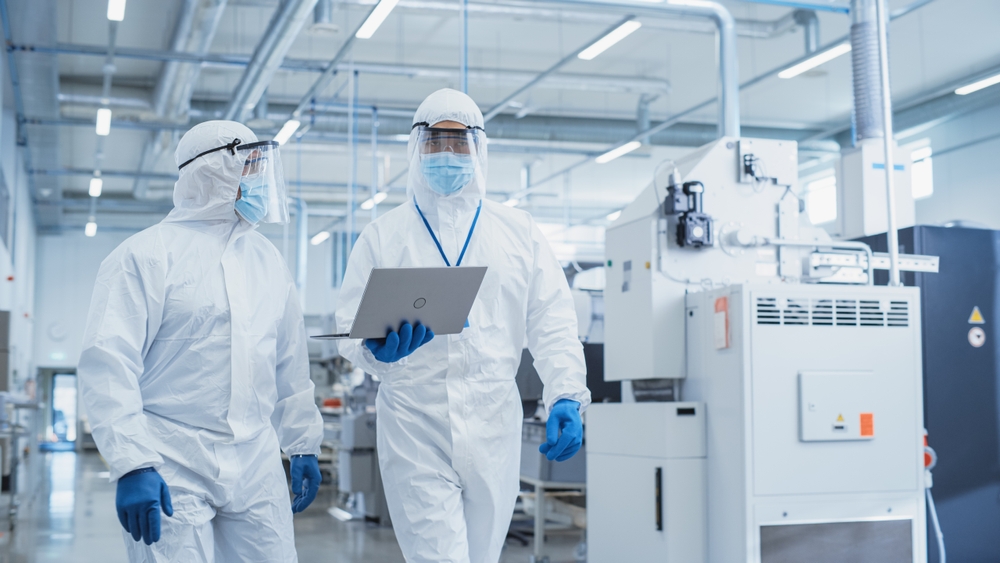Right now, every business is struggling to adjust to a very new world. Even though COVID-19 cases are dropping in the North East area, we still have to proceed with absolute caution. Many businesses have safety policies changing on a daily basis. And in labs, when workers must often work in close proximity to each other, keeping it safe can be a challenge.
Furthermore, many labs already have inherent safety concerns without the risk of COVID-19. This is especially true for biosafety labs that handle hazardous materials. Additionally, many labs operate based on unofficial safety policies that exercise common sense. High traffic work sites can accumulate a lot of germs. Both the volume of workers as well as the specimens contribute to a high-risk environment. In this post, we’ll discuss proper sanitizing procedures for these areas. Read on to find out more!
General Lab Cleaning Tips
Undoubtedly, there are some very basic tips that can help keep the lab (as a whole) sanitary. First, encourage every employee to use hand sanitizer throughout the day. Also, regular hand washing with soap and water should be a strict policy. Use disinfectants to clean surfaces like doorknobs, armrests, tables – anything that all workers touch.
Obviously, face masks are critical right now. No business, scientific or otherwise, can afford to relax this policy. Every industry from retail to food service is enforcing face mask policies in employees and guests. When possible, try to install acrylic dividers between workers. Also, encourage social distancing of six feet or more. When your equipment isn’t in use, store it in an enclosed area. This can help prevent contamination from someone passing nearby. Fan and filter units should always be clean and operating properly. And if possible, try to schedule down time in between workers. This will allow airborne substances to settle throughout the day.
Developing Your Cleaning Plan
At first, this might seem a bit formal or rigid. However, nowadays, no lab can afford to be lax about their cleanliness. Every lab administrator should develop a detailed, thorough cleaning plan for employees to follow regularly. Managers should enforce this plan and ensure that all personnel adhere to it on a daily basis.
These cleaning recommendations come directly from the CDC and apply to every U.S. workplace.
1. Determine What Must Be Cleaned
Obviously, deciding what must be cleaned is your first step. Any areas with little to no traffic don’t require as stringent attention as your lab’s high-traffic sites. Sites with no occupation for seven or more days need only basic, routine cleaning as per the CDC. However, any site where employees regularly assemble should be cleaned, sanitized and disinfected as rigorously as possible.
2. Determine How They’ll Be Disinfected
When it comes to this step, consider a few key factors. First, consider what type of surface it is and how often it’s touched. Obviously, any surfaces that employees touch frequently should receive highest priority.
3. Consider What You Need
Try to keep in mind precisely what you need as well as their availability. Products like gloves, disinfecting agents, et cetera should all be on hand when performing a cleaning of your lab’s high-traffic sites.
Implementing Your Cleaning Plan
1. Clean With Soap & Water
Prior to disinfecting, you should clean any visibly dirty surfaces with soap and water. This is to ensure that any bacteria or germs lingering on the surface are effectively annihilated.
2. Use the Appropriate Cleaning/Disinfecting Agent
Use a disinfectant that’s EPA-approved to clean and sanitize all necessary surfaces. Read the label to make sure it meets your lab’s needs. Also, be sure to check how long the solution needs to kill any viruses, bacteria or pathogens. This time varies for each individual product.
3. Follow the Label’s Directions
Usually, the labels on each cleaning agent will have crucial information like safety and application instructions. Obviously, in a lab setting, it’s unlikely a child will be able to access the bottle. However, you should still take care to store it in a safe, room-temperature location.
Sanitizing Your Computer & Instruments
When cleaning your computer, the key to thorough sanitizing is disassembly. In short: if it disconnects, unplug and disinfect it. Units such as mice, wrist supports and keyboards should be taken apart and cleaned with a disinfectant. Importantly, when you’re doing this, be sure to read the specifications of the disinfectant. Most disinfectant cleaners must sit on a surface for a specific amount of time in order to kill bacteria and pathogens. Usually, this time ranges between nine and twelve minutes.
Be very careful not to wet any sensitive components. USB, power connectors and electronic sensors can stop working permanently if they’re wet. For surfaces like computer screens, use a soft wipe or cotton ball lightly dampened with isopropyl alcohol to avoid damage.
Conclusion – SEPS
At SEPS, lab safety and cleanliness are our top priority. Obviously, right now it’s more important than ever. Even if your lab is not handling COVID-19 specimens, these sanitizing procedures can keep your staff healthy. And at SEPS, our accreditations and affiliations are a testament to our passion for quality. We can help you keep your lab safe and sanitary – contact us for more information!
